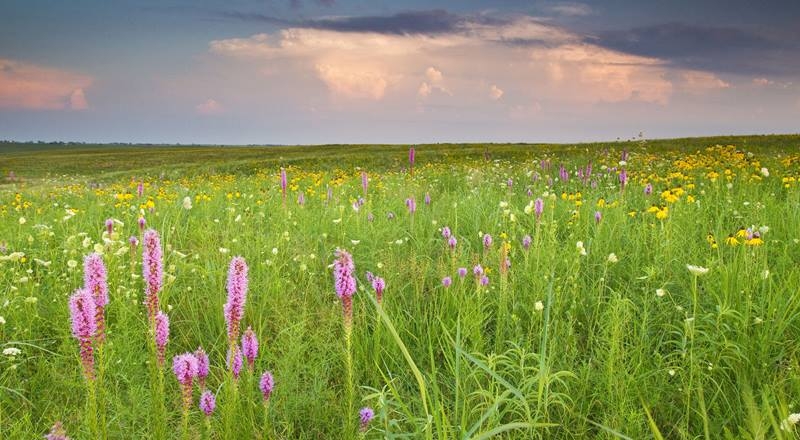The Science
Scientists predict a warming Earth will cause more droughts that are more severe in the grasslands of the central United States. Soils in these fertile, productive grasslands store large reserves of carbon. Previously, scientists did not know how the decrease in soil moisture due to drought would affect carbon cycling and other key biogeochemical cycles carried out by soil microbiomes. This research found that soil drying affects the microbial community in several ways. First, it affects what microbes are there. In addition, it influences the relationship between those microbes and organisms that produce compounds that help microbial species survive during a drought.
The Impact
Researchers used multiple methods to study the community of microbes, including analyzing its rRNA, how it expresses its genes, and the molecules cellular processes produce. They showed that despite the soil habitat’s complexity, it is possible to better understand the effect of environmental change on the community of microbes (microbiome) in the soil. They also gained insight into how that microbiome functions. This large-scale approach lays the groundwork for future, targeted studies. Other scientists could also use this approach to study other complex microbial systems.
Summary
Warming temperatures are causing shifts in precipitation patterns in the central grasslands of the United States, with largely unknown consequences on the collective physiological responses of the soil microbial community, i.e., the metaphenome. In this study, researchers used an untargeted omics approach to determine the soil microbial community’s metaphenomic response to soil moisture and to define specific metabolic signatures of the response. Specifically, they aimed to develop the technical approaches and metabolic mapping framework necessary for future systematic ecological studies.
The research team collected soil from three locations at a field station in Kansas, incubated the samples for 15 days under dry or wet conditions, and compared them to field-moist controls. The team determined the microbiome response to wetting or drying through 16S rRNA amplicon sequencing, metatranscriptomics, and metabolomics. Researchers then assessed the resulting shifts in taxa, gene expression, and metabolites. Soil drying resulted in significant shifts in both the composition and function of the soil microbiome, such as changes in metabolic pathways that lead toward the production of sugars and other osmoprotectant compounds. By contrast, few changes occurred after wetting. The team used the combined metabolic and metatranscriptomic data to generate metabolite-reaction networks to determine the metaphenomic response to soil moisture transitions, such as generation of trehalose under dry conditions.
Funding
This research was supported by the Department of Energy Office of Biological and Environmental Research (BER) and is a contribution of the Scientific Focus Area “Phenotypic response of the soil microbiome to environmental perturbations.” This research was also supported by the Environmental Molecular Sciences Laboratory (EMSL). EMSL is a U.S. Department of Energy (DOE) Office of Science user facility sponsored by the DOE’s Office of Biological and Environmental Research and located at PNNL. A portion of the research was conducted using PNNL Institutional Computing (PIC) resources and partially supported by the Microbiomes in Transition Initiative under the Laboratory Directed Research and Development Program at PNNL.
Original post https://alertarticles.info
